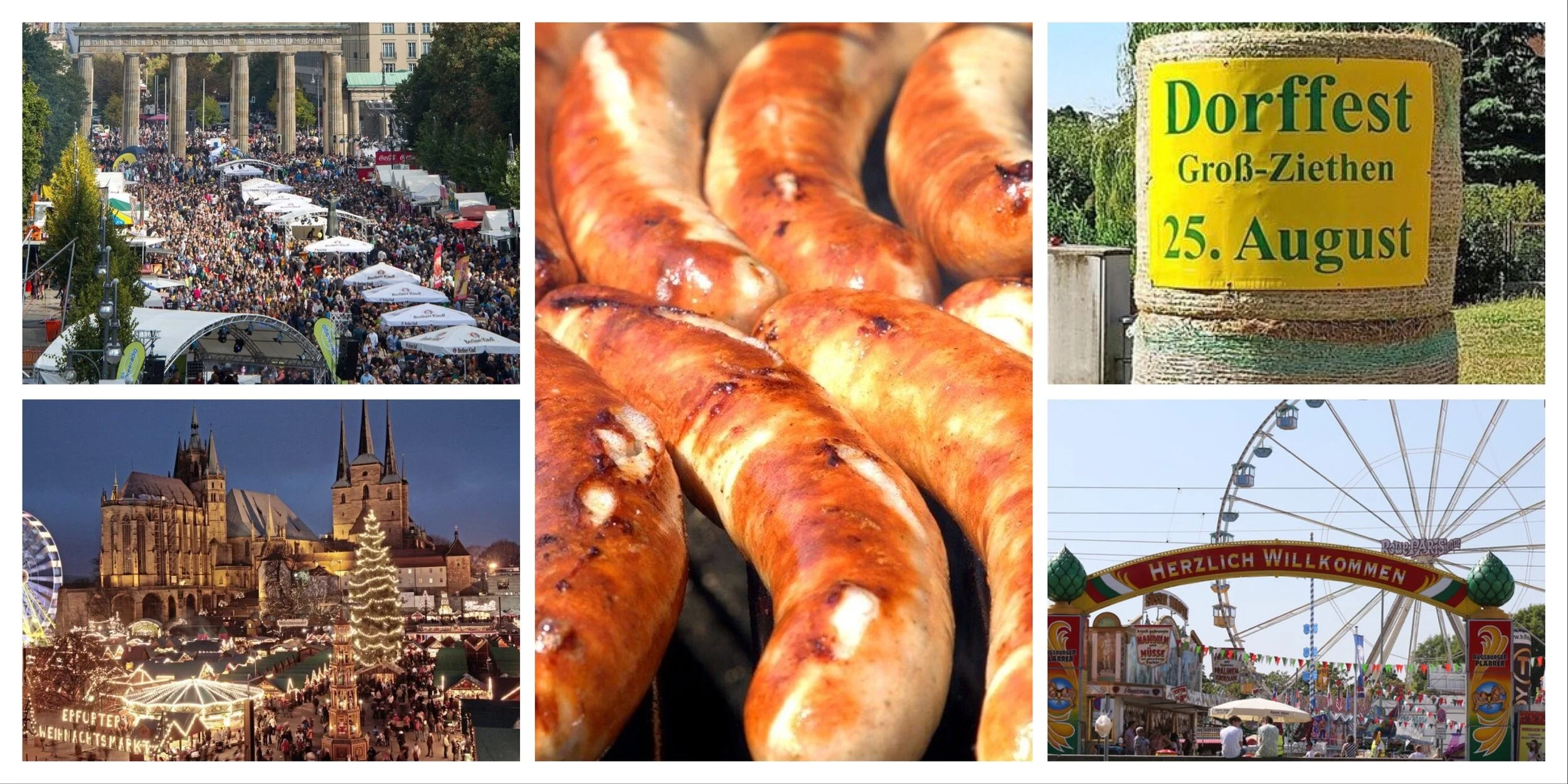Spot the Difference
Before my wife and I got married, we spent almost five years travelling between the UK and Germany to see each other. Over the months and years, we both became accustomed to the nuances of each other’s home countries, but even as our understanding changed, there were always things we were less than thrilled with. For my wife, the question “How’s Germany?” was high on that list. The question asker was invariably British and the cue to ask was usually a lull in the conversation. The question became so common that my wife began to predict its appearance, often daring me to bet against her and always for the same stakes, the mighty sum of €20. Many times I took that bet and many times I lost. Thankfully my wife never really expected me to pay, which is rather fortunate since by my count, I still owe her €2360.
I never found the question as annoying as my wife. I understood that “How’s Germany?” was one of the many ways British people try and maintain polite conversation. It was a general question that could easily be deflected with a simple “Fine” or “Not bad”, and with the addition of a comment on a recent event or activity, could easily move the conversation on to other more interesting areas. The question is obviously impossible to answer, but the question was far less important than the function. Polite conversation is, after all, the starting point of a lot of British interactions.
It wasn’t until I moved to Germany that I became frustrated with “the question”, mainly because I suddenly became the target of the inane cross examination. I’d thought it cute watching my wife navigate the invisible rules of British communication like a pro, but now I was the target, it no longer felt so endearing. What frustrated my wife and eventually me, was the fact that the question cannot be answered simply and certainly not without asking “Which Germany do you mean?”.
The question itself makes a very large assumption, namely that Germany is homogeneous. Obviously, there are many aspects of German life and culture that remain the same no matter which part of the country you’re in, but there’s often quite large differences between the sixteen Bundesländer. Theses can range from state laws to food & drink, and even public holidays. The historical development of Germany explains this, with states, governed by separate monarchs and princes, loosely allying together or conquering neighbours and in flux until unification in 1871. Travelling across state borders is less like crossing a county line and much more like crossing the border between England and Scotland. One of the major differences between Germany and the UK here is scale; Germany is a larger country and has a larger population. This might explain why the differences seem more distinct and take on more significance.
Regional state difference is a big part of German identity. For example, I live in Bavaria, a state that is often jokingly considered to be the least German. The title of Freistaat (Free State) is still retained and has become synonymous with the southern state. For many Bavarians, regional identity is not just important, but celebrated, and it’s more common to see the flag of Bavaria flying from a window or flagpole than that of Germany. This regional pride was underlined throughout the pandemic, as the Minister President of Bavaria, Markus Söder, was rarely seen publicly without a face mask decorated with the blue and white diamond pattern of the Bavarian state flag. Of course, he wasn’t the only one. Many public and not so public figures took to wearing masks that celebrated their regional identities, either with a state symbol or a phrase that identified the wearer’s particular region.
As I mentioned, flags are a tangible symbol of regional identity, but there are many others. For instance, if I went to Hamburg in September, wearing Lederhosen and asking about beer festivals, I would be deeply disappointed to find I was approximately 790km away from Oktoberfest. Many outside Germany believe the most famous beer festival in the world is nationwide, when it’s a very specific Munich based event. Most regions, cities, and villages have their own hyper regional variations. They may have similarities, such as offering beer, food, and music, but they will celebrate different things such as the building of a local church or some community activity.
Along with festivals, there’s clothing. The traditional Oktoberfest outfit of Lederhosen might be considered the national dress of Germany, but despite an increase in people wearing Trachten (Regional Dress) around the country, the lederhosen and Dirndl are more commonly associated with the south.
Food and drink also vary from state to state. Most have a particular speciality that can only be bought in that area and sometimes at only very specific times in the year. The famous bakeries of Germany don’t always stock the same goods in each state and nor is there one dominant national chain. Regional differences are not just in the product, but in their very names. Take the humble bread roll, it could be a Weckla, but it could also be a Brötchen, a Semmel or a Schrippe depending on where you are. Even native Germans might not be aware of all the regional differences until they arrive in a particular place.
Furthermore, within a single state, regional differences can trip up the unsuspecting visitor. I live in Augsburg, only two hours away from the second largest city in Bavaria, Nürnberg. Those two hours, in certain situations, can be a chasm of regional culture. Alongside bread, beer is certainly a matter of regional identity and pride, and in Nürnberg, the visitor can be spoiled for choice due to the fantastic range and variations of the many different breweries that have been based in the Nürnberger Land region for centuries. I always make sure to stock up whenever I visit, because once I head back to Augsburg, I’m unlikely to find any of the same beers that seemed so widespread 146 km down the road.
This 146 km cultural chasm extends further than just food and drink. If I were to ask a resident Nürnberger what it is like to be Bavarian, I might well be curtly informed that in no way is the Nürnburg region of Franken (they also have a separate flag) a part of Bavaria, despite the government, signposts and maps clearly saying it is. Germany is a country of states within states and in some cases cities within cities. Nürnberg and Fürth are examples of this phenomenon, two separate cities that are divided by a train station and a few steps across a road. The Stadtgrenze or city border is even a stop along the local Ubahn system. Without the train stop and some nondescript signs dotted around, visitors would have no idea they had crossed into a separate city.
The German states are as old as any European nation, but Germany as a unified country is still fairly young and perhaps for this reason the differences still seem so pronounced. The language differences state to state alone are worthy of their own article. It’s not surprising, given the history of division and rival kingdoms, that there might be such cultural and dialectic differences. This explains why questions about Germany are so hard to answer; everything may look the same, but on closer inspection, the differences are there to see.
Image Credit
Photo by Tobias Reich on Unsplash









